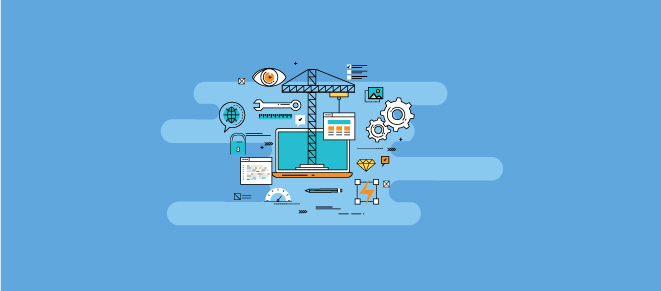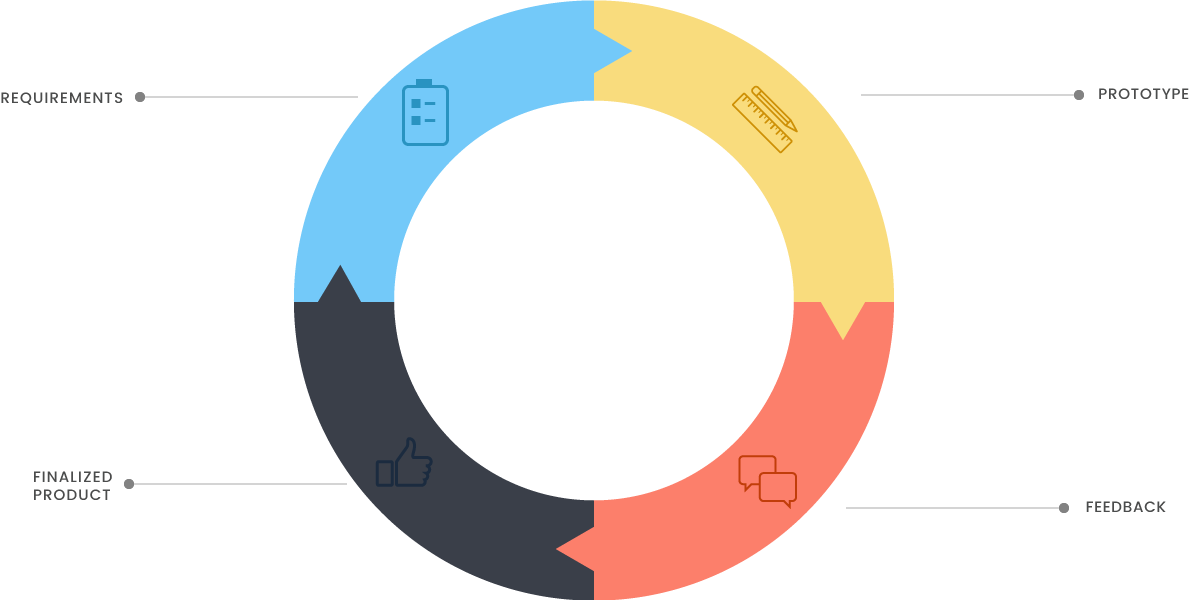What is rapid application development?
It’s a software development methodology to develop quick working programs. Rapid application development uses predefined prototyping techniques and tools to provide better software system applications.

RAD concentrates on the delivery of the product and involves the client from the start and focuses on the client’s needs, uses an incremental approach, keeps the project plan updated, applies development fundamentals, and manages risks RAD systems generally reduce developing time, typically at the expense of generating efficient executable code.
It features a GUI development atmosphere allowing users to drag and drop required software application component.
RAD contains inbuilt and customizable data, processes and structure models. Thus, it includes a model-driven and object-oriented approach to developing complete solutions.
It support variety of methods including, rapid prototyping, virtualization of system related routines, the use of CASE tools and other techniques
When do you use Rapid application development?

- When you need to get something done quickly or If you’re working on a tight deadline, you should consider using RAD, as you’ll produce a working system more quickly than with more traditional methods such as Waterfall.
- RAD depends on the constant improvements suggested by end users, so you want to make sure that they are available to collaborate with your development team throughout the process.
Providing users for testing can be a part of negotiating your timeline and budget with your client. The good thing is, you’re getting your project done quickly. Users theoretically won’t need to clear much time in their schedules to test your software iterations.
- When you have the budget go for it. Creating a high-quality application quickly requires skill and precision. That means hiring talented designers and engineers. And that means paying them their deserved higher salaries.
Process of Rapid Application Development

1. Define Requirements
Defining requirements will be the first step in the development process. Developers gather the product information such as specifications, requirements.
The client provides their vision for the product and comes to an agreement with developers on the requirements.
2. Prototype
In this rapid application development process this will be area where developers build something that they can demonstrate to the client. This can be a prototype that satisfies all or only a portion of requirements.
3. Feedback
RAD developers will show their work to the client. They receive feedback from the clients involving interface, functionality and other areas. This is where product requirements may come under scrutiny.
Clients may change their minds or discover that something that seemed right. With feedback in hand, developers can plan according to the change. If feedback is strictly positive and the client is satisfied with the prototype, developers move to further process.
4. Finalize the Product
Transition stage allows the development team to focus on moving the components to a live production environment, where any necessary full-scale testing or team training can take place.
Advantages
Division of larger project into smaller tasks
Breaking a large project into smaller tasks when developing a large, complicated piece of software, it can help you to naturally form more specialized teams.
Finishing one simple piece of your system up front gives you more hands on deck to help with more complicated pieces.
That means that everyone can give more focus to that complicated piece since they’re not preoccupied with thinking about all the smaller pieces they have to perfect before creating a finished product. And who doesn’t want a more focused team when it comes to more difficult problems?
You can quickly get a working product
By presenting working pieces, your team can put them all together at the end and, voila, you’re done! And since they start creating working prototypes right after the requirement session.
You won’t have a final product until you’ve stitched all your prototypes together, you’ll always have finished pieces to show your clients.
You get feedback constantly from the end user
You can get their feedback and quickly implement any changes that require to be created before they’re added to your finished product.
Ideally, this suggests that you just never have a client who, during your final presentation, says one thing like, “This isn’t what I expected.” Users are heavily concerned within the development method
Disadvantages
- Difficulty Within Large-Scale Projects: While rapid application development methods lead to far greater flexibility during the design and development process, it will also tend to reduce control and restrictions.
- Progress and problems are accustomed are hard to track as there is no documentation to demonstrate what has been done.
- Not all applications are compatible with RAD.
- Depends Upon Skilled Developers: Many developers these days are multi-disciplined, it is worth noting that use of RAD techniques does require a greater overall skill across the development team, in order to quickly adapt as the system and components evolve.
Rapid application development is a lot of a software system development methodology instead of a specific language, tool, or interface. However, tools will help facilitate rapid design, development, and feedback solicitation.
Design
Some tools in the list allows designers to achieve interactive designs at impressive speeds.
| Tool | Support Type |
|---|---|
| Adobe Experience Design | macOS, Windows |
| Sketch | macOS |
| Mockplus | macOS, Windows |
| InVision | macOS, Windows |
| Balsamiq | macOS, Windows |
Testing and feedback tools
RAD methodology needs frequent feedback from clients and end-users.
Some tools which may be helpful for testing and feedback are mentioned below.
| Tool | for |
|---|---|
| User testing | end-users |
| InVision | clients |
| Conjure | clients |
| Validately | end-users |
Development Tools
If your team has strict technology needs or a limited skill set, it’s less complicated to stay with what they apprehend. Usually you can’t justify the cost of migrating technologies.
However if you’re willing to think about a replacement approach to development, the tools in this category can accelerate your production cycle.
| Tool | builds |
|---|---|
| Salesforce Appcloud | Web, Mobile |
| Alpha Software | Windows,Web,mobile |
| Zoho Creator | Web |
| WaveMaker | Web,mobile |
| Spring | web,mobile |
By utilizing a RAD technique, designers and developers will utilize information and discoveries gleaned throughout the development method itself to form the planning and or alter the software package direction entirely.
If you would like to create an internal business tool or perhaps a customer-facing portal, like an app or web site, RAD techniques can facilitate your team deliver a far better experience to your end-user.